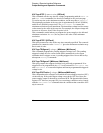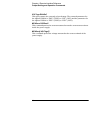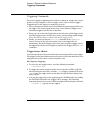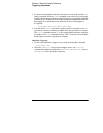
Chapter 4 Remote Interface Reference
Triggering Commands
91
4
Triggering Commands
The power supply’s triggering system allows a change in voltage and current
when receiving a trigger, to select a trigger source, and to insert a trigger.
Triggering the power supply is a multi-step process.
• First, you must specify the source from which the power supply will accept
the trigger. The power supply will accept a bus (software) trigger or an
immediate trigger from the remote interface.
• Then, you can set the time delay between the detection of the trigger on the
specified trigger source and the start of any corresponding output change.
Notice that the time delay is valid for only the bus trigger source.
• Finally, you must provide an
INITiate
command. If the
IMMediate
source is selected, the selected output is set to the triggered level
immediately. But if the trigger source is the bus, the power supply is set to
the triggered level after receiving the Group Execute Trigger (GET) or
*TRG
command.
Trigger Source Choices
You must specify the source from which the power supply will accept a trigger.
Th e t rigge r is s tore d i n v olat ile me mo ry ; th e s ou rc e i s set to bu s wh en th e p ower
supply has been off or after a remote interface reset.
Bus (Software) Triggering
• To select the bus trigger source, send the following command.
TRIG:SOUR BUS
• To trigger the power supply from the remote interface (GPIB or RS-232)
after selecting the bus source, send the
*TRG
(trigger) command. When the
*TRG
is sent, the trigger action starts after the specified time delay if any
delay is given.
• You can also trigger the power supply from the GPIB interface by sending
the IEEE-488 Group Execute Trigger (GET) message. The following
statement shows how to send a GET from a Agilent Technologies controller.
TRIGGER 705
(group execute trigger)


















